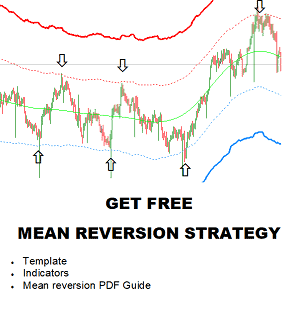Enter the realm of traders using Chromebook Linux. This combination of lightweight hardware and the flexibility of Linux offers a unique blend for those who wish to trade on the go without compromising on functionality.
Originally designed to be cloud-centric laptops with minimal onboard storage, Chromebooks have evolved. The ability to run Linux applications has opened up a world of possibilities, especially for traders. MetaTrader 4 (MT4), one of the most popular trading platforms known for its user-friendly interface, advanced charting tools, and algorithmic trading capabilities, isn’t natively designed for Linux. However, with the advent of software like Wine, installing MT4 on a Chromebook has become a seamless process.

For traders, this combination of Chromebook Linux and MT4 means the ability to monitor markets, analyze charts, and place trades, all from an affordable and portable device. It’s no longer about being tied to a bulky desktop or needing a high-end laptop. The agility of the Chromebook, combined with the power of MT4, creates a compelling trading workstation.
How do you install MetaTrader 4 or MT5 on a Chromebook?
To install MT4 on a Chromebook, add Wine’s repository, update your package list, install Wine, configure it, download the MT4 installer, and execute it using Wine. These steps are applicable for Chromebooks with Intel or AMD CPUs (with Linux Apps Support) and unsuitable for devices with ARM64 architecture CPUs.
If you need an MT4 platform designed for Linux, please download MT4 for Linux!
Please see my video about installing MT4 on a Linux Chromebook:
Wine is a compatibility layer that allows users to run Windows applications on Linux-based operating systems. Let me break down the commands step by step:
- Enable Multiarch Support This command allows your Debian/Ubuntu-based distribution (which Chrome OS’s Linux container is based on) to install 32-bit libraries and packages alongside 64-bit ones. This is necessary because many Windows applications, including some versions of MT4, are 32-bit.
sudo dpkg –add-architecture i386 - Download Wine’s Signing Key
This command fetches the GPG key used to sign Wine’s packages. This ensures that the packages you’re installing are genuine and haven’t been tampered with.
wget -nc https://dl.winehq.org/wine-builds/winehq.key - Add Wine’s Signing Key
Adds the GPG key to your system’s list of trusted keys. This ensures that packages signed with this key are considered trustworthy.
sudo apt-key add winehq.key - Add Wine’s Repository
Adds Wine’s official repository to your system’s list of package sources. This ensures you can install and receive updates directly from Wine’s official channels.
echo “deb https://dl.winehq.org/wine-builds/debian/ bullseye main” | sudo tee /etc/apt/sources.list.d/wine_chrome_os_made_simple.list - Update System Repositories
Refreshes your local list of packages. After adding a new repository, it’s always a good idea to run this.
sudo apt update - Install Wine
Installs the stable version of Wine and any recommended packages.
sudo apt install –install-recommends winehq-stable - Configure WineRuns the Wine configuration utility. This might be useful for setting Wine to emulate a specific version of Windows, among other things.
winecfg - Download MT4 Setup
Fetches the MT4 installer from a specified URL.
wget https://URLyourbroker/mt4setup.exe - Install MT4
wine mt4setup.exe
Discussion: Steps to Install MT4 on Chromebook
The proliferation of Chromebooks in the market, particularly for traders looking for portability without skimping on function, has created a need to accommodate popular trading platforms like MetaTrader 4 (MT4) on such devices. Here’s a deep dive into the procedure and its intricacies.
Enable Multiarch Support:
The primary step, sudo dpkg --add-architecture i386, acknowledges the necessity of compatibility. Since many Windows applications, MT4 included, operate on a 32-bit basis, this multiarch support ensures Chrome OS’s Linux framework (primarily rooted in Debian/Ubuntu) can handle 32-bit and 64-bit installations.
Wine’s Role in Compatibility:
The following few commands are centered around Wine, a crucial tool enabling Windows software to run on Linux. By fetching the Wine’s signing key (wget -nc https://dl.winehq.org/wine-builds/winehq.key), there’s an emphasis on security. This GPG key vouches for the authenticity of Wine’s packages, ensuring no malicious edits have occurred. The following command, sudo apt-key add winehq.key, adding Wine’s key to the trusted roster further cements this trust.
Integrating Wine’s repository directly (echo "deb https://dl.winehq.org/wine-builds/debian/ bullseye main" | sudo tee /etc/apt/sources.list.d/wine_chrome_os_made_simple.list) ensures users access to Wine’s most up-to-date, official channels, facilitating installation and updates.
There seems to be a gap in the sequence, hinting at potential additional commands, most likely focusing on ensuring all repositories, including the new ones, are acknowledged.
Setting the Stage:
Before diving into Wine’s installation, updating the system repositories (sudo apt update) is crucial. It’s akin to ensuring you have the latest catalog before purchasing.
Wine Installation and Configuration:
With everything set, the actual installation of Wine (sudo apt install --install-recommends winehq-stable) is a smooth process. Notably, the --install-recommends Flag ensures that Wine is installed and that any packages are deemed beneficial for its optimal functioning. Post-installation winecfg acts as a preliminary configuration step. Here, one can tailor Wine to emulate specific Windows versions, a potentially crucial aspect for particular software.
MT4’s Arrival:
Finally, the focus shifts to MT4. The command wget https://yourURLto_mt4_setup.exe It is straightforward, aiming to fetch the MT4 setup. However, one should cautiously approach such downloads to ensure the source’s legitimacy. The culmination is wine mt4_setup.exe, where Wine is put to the test, bringing MT4 to life on a Chromebook.
In conclusion, this sequence is a testament to how open-source solutions like Wine have made cross-platform adaptability achievable. The process, while intricate, ensures traders can leverage the full power of MT4 on their Chromebook devices.
























